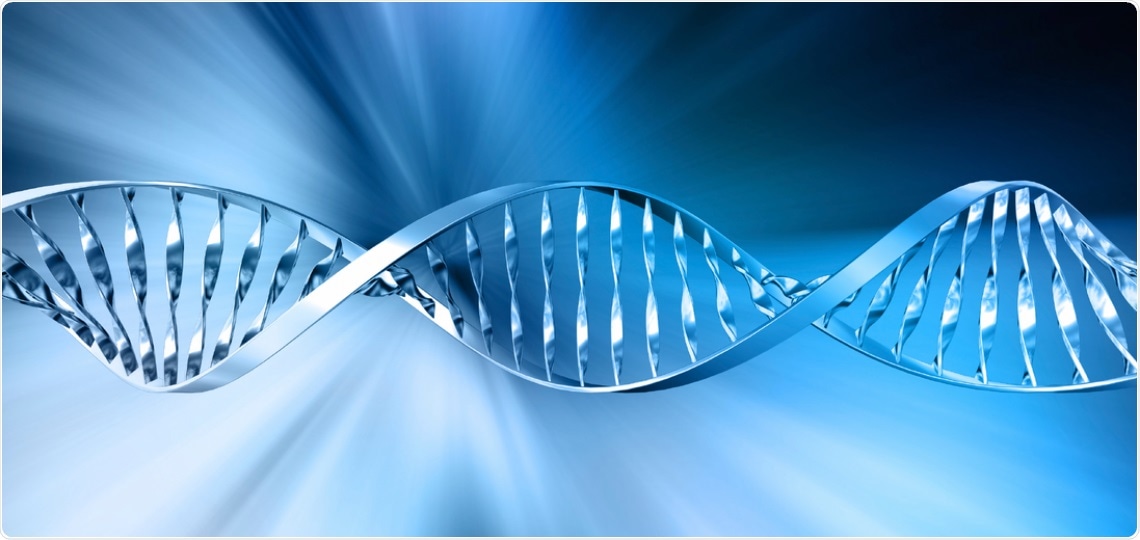The androgen receptor is considered the main driver of the growth and initiation of prostate cancer, which is known to be the second-leading cause of death in men.

Image Credit: Baylor College of Medicine
Now, scientists from Baylor College of Medicine have performed detailed studies on the three-dimensional (3D) structure of the androgen receptor to gain a deeper understanding of the working mechanism of the androgen receptor in cancer.
The results revealed the structure of a location on the receptor that appears to be at the core of its action, known as the N-terminal domain, where it communicates with activity-enhancing coactivators that collectively control gene expression that fuels prostate cancer. Published in the Molecular Cell journal, the study provides a new understanding of the design of upcoming treatments for this debilitating condition.
The androgen receptor
The androgen receptor binds to and mediates the effects of the androgenic hormone testosterone. The receptor is found in several tissues of both males and females, including skeletal muscle, heart and the nervous and the reproductive systems.”
Dr Ping Yi, Study Co-First Author and Assistant Professor, Department of Molecular and Cellular Biology, Baylor College of Medicine
Yi added, “In males, the androgen receptor contributes to the development of sexual characteristics, and in both males and females it also regulates hair growth and sex drive.”
Previous research had demonstrated that when the androgen receptor adheres to testosterone, the ensuing molecular complex moves to the cell nucleus where it communicates with DNA and turns genes on or off as required to control growth and development.
To sustain its activity, the androgen receptor also attaches to coactivators and other kinds of molecules that support its gene-regulatory function. But it is not known how the entire molecules are assembled together in a functional complex with the androgen receptor.
The androgen receptor drives prostate cancer. To treat this cancer effectively, we need to better understand how the androgen receptor works. In this study, we reveal for the first time the complete 3D structure of the active, full-length androgen receptor-coactivator complex as it interacts with DNA.”
Dr Bert O’Malley, Study Co-corresponding Author and Chancellor, Baylor College of Medicine
Cryo-EM reveals new components of androgen receptor structure and function
Prior to this analysis, the scientists only had a rough idea of the 3D structure of the androgen receptor. They were overlooking a part known as the N-terminal domain, which according to biochemical evidence could be essential for its activity. Determining the entire structure of the androgen receptor would help decode the reason as to why the N-terminal domain is vital for the activity of the receptor.
Dr Yi, who is also a member of Dan L Duncan Comprehensive Cancer Center in Baylor College of Medicine, added, “Cryo-electron microscopy let us see what the N-terminal domain of the androgen receptor looks like, how the protein is organized and how this and other individual domains contribute to the coactivated protein and its function.”
The scientists found that the N-terminal domain at the start of the androgen receptor is the site where the coactivators bind, triggering the complex that causes prostate cancer. This outcome was in stark contrast with what the same group of scientists had identified for the estrogen receptor—a major cause of breast cancer.
The estrogen receptor and the androgen receptor are part of the same class of steroid nuclear receptors and share analogous 3D structures. But in spite of having general structural similarities, in the estrogen receptor, the coactivators adhere to the C-terminal domain located at the end of the molecule and not to the N-terminal domain situated at the start of the molecule. This result holds significant implications for developing medications for cancer treatment.
Therapeutic implications
According to O’Malley “The androgen receptor drug inhibitors that are currently available for prostate cancer treatment bind to the C-terminal domain, which we found is not the main interactive site of the androgen receptor. Our work strongly supports further studies to determine the effect that drugs directed at the androgen receptor’s N-terminal domain have on prostate cancer growth.”
Our work provides a starting point to understand what is happening to the androgen receptor molecular machine in prostate cancer.”
Dr Zhao Wang, Study Co-corresponding Author and Assistant Professor, Department of Biochemistry and Molecular Biology, Baylor College of Medicine
“Our findings also generate a broader therapeutic space for the treatment of not only prostate cancer but also related diseases, as well as new information on basic mechanisms of regulation of gene expression,” Dr Wang concluded.
Source:
Journal reference:
Yu, X, et al. (2020) Structural Insights of Transcriptionally Active, Full-Length Androgen Receptor Coactivator Complexes. Molecular Cell. doi.org/10.1016/j.molcel.2020.06.031.